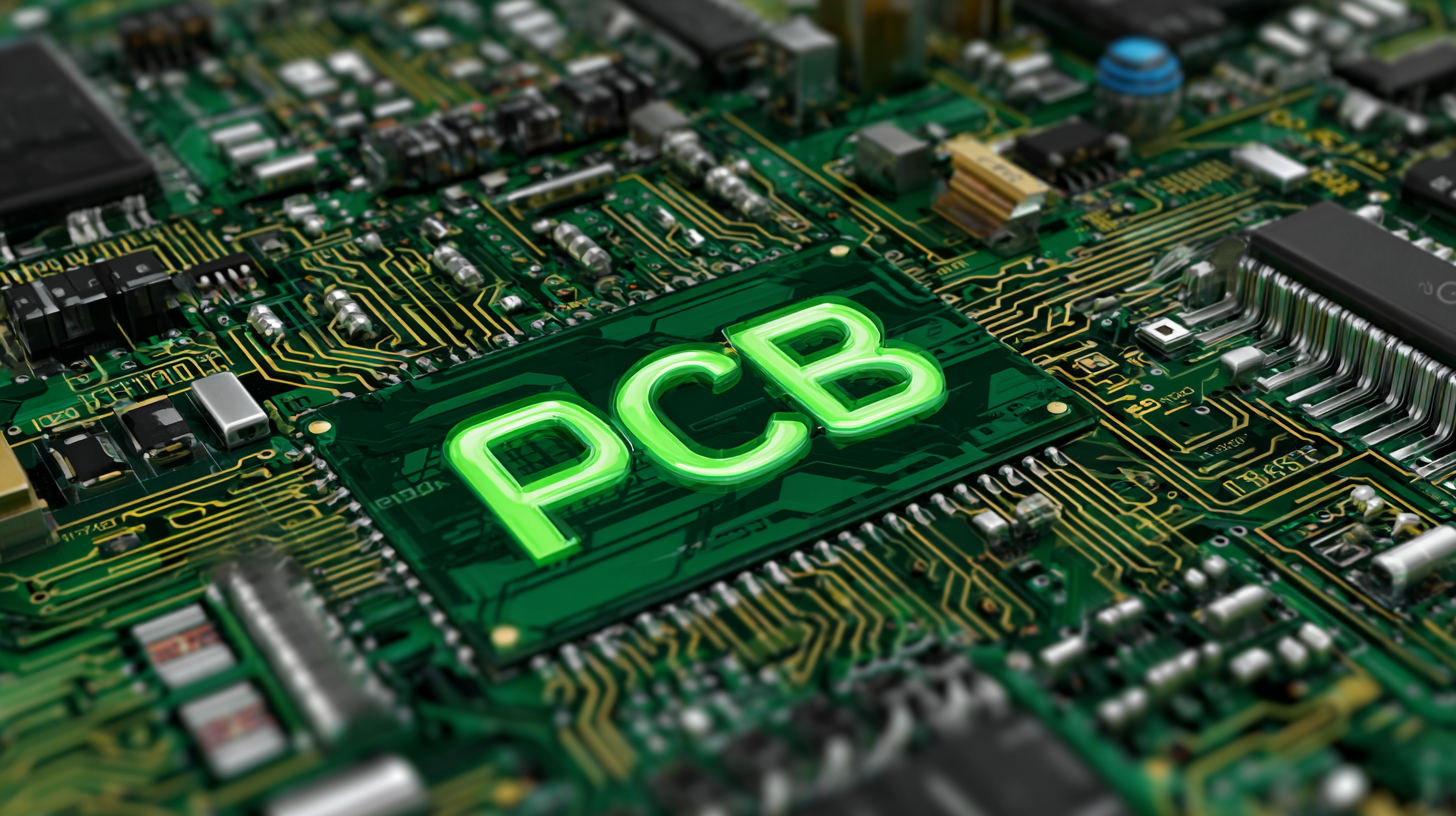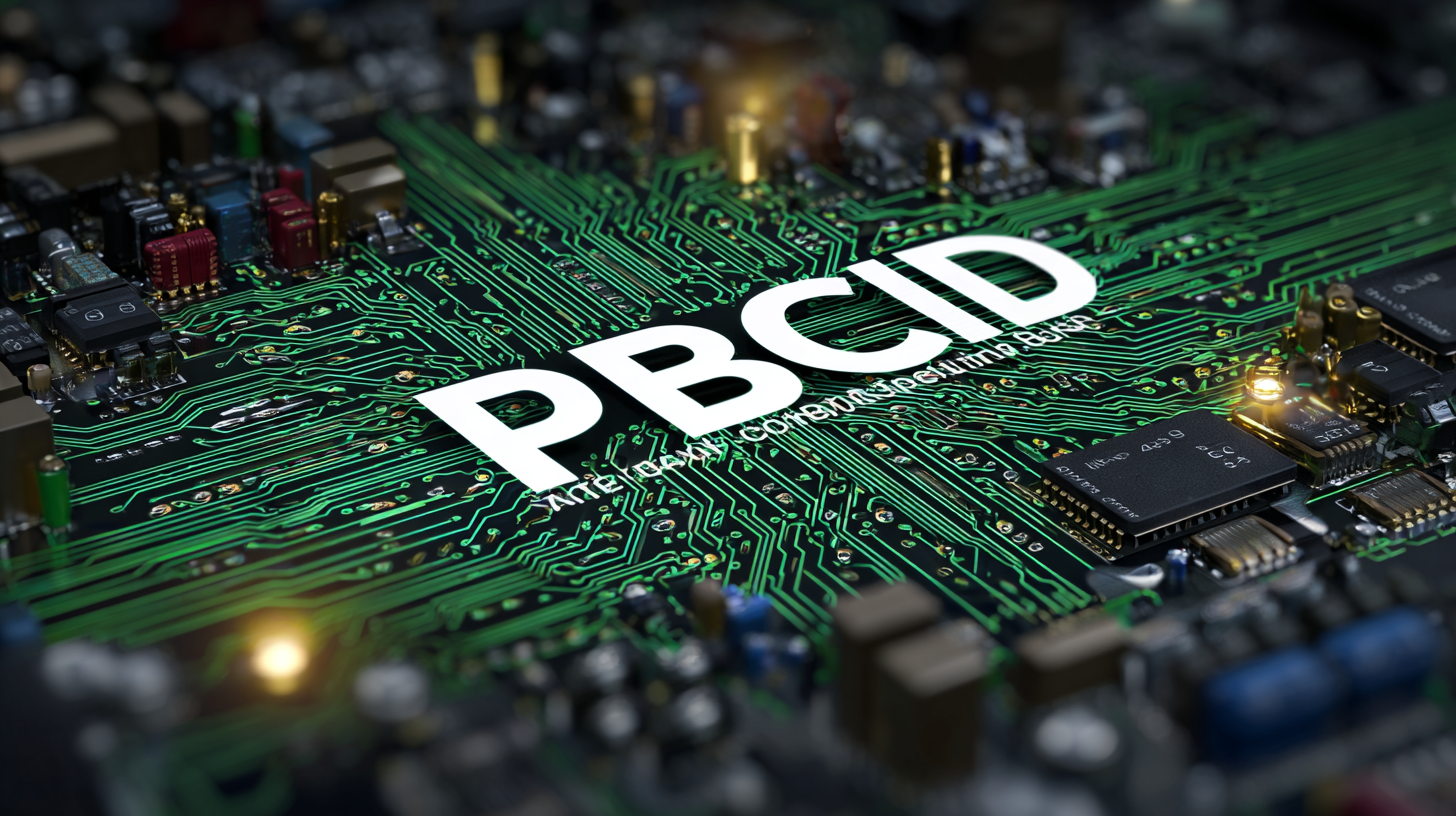Navigating the Challenges of Sourcing the Best Printed Circuit Board: Insights and Solutions
In the rapidly evolving landscape of technology, sourcing the best Printed Circuit Board (PCB) has become a critical challenge for manufacturers and designers alike. As we look towards the trends shaping 2025, the significance of high-quality PCBs cannot be overstated; they are integral to the functionality and performance of a vast array of electronic devices. This blog aims to navigate the complexities involved in PCB sourcing, exploring the latest advancements in materials, design techniques, and manufacturing processes. Furthermore, we will delve into the benefits of various PCB types, highlighting how choosing the right board can lead to improved reliability, cost-effectiveness, and innovation in product development. By understanding these dynamics, stakeholders can make informed decisions that align with future technological demands while overcoming the common hurdles faced in the procurement process.

Understanding the Importance of High-Quality Printed Circuit Boards in Modern Electronics
High-quality printed circuit boards (PCBs) are fundamental to the performance and reliability of modern electronic devices. As the demand for advanced electronics increases, the significance of sourcing top-tier PCBs cannot be overstated. According to a report by MarketWatch, the global PCB market is expected to reach $80 billion by 2026, driven by sectors such as automotive, consumer electronics, and healthcare, all of which increasingly rely on sophisticated circuit designs to enhance functionality.
The production of high-quality PCBs involves meticulous attention to factors such as materials, manufacturing processes, and design intricacies. A 2023 study published by IPC indicates that defects in PCBs can lead to significant financial losses, averaging around 10% of total manufacturing costs. Furthermore, the reliability of PCBs directly influences product lifespan and performance; the same study reveals that over 30% of electronic failures can be traced back to PCB issues. Therefore, understanding the importance of quality in PCB sourcing is crucial for manufacturers aiming to maintain competitive advantage and meet decreasing time-to-market demands while ensuring product reliability.

Key Factors to Consider When Selecting a PCB Manufacturer
When selecting a PCB manufacturer, several key factors must be taken into account to ensure optimal results. First and foremost, the manufacturer's experience and reputation in the industry play a critical role. A well-established company with a proven track record is more likely to deliver high-quality products that meet stringent specifications. Additionally, evaluating their certifications, such as ISO or IPC standards, can provide further assurance of their commitment to quality and reliability.
Another crucial consideration is the manufacturer’s technological capabilities. Advanced manufacturing techniques and equipment can significantly impact the precision and performance of printed circuit boards. Prospective buyers should inquire about the capabilities of the manufacturer regarding the complexity of designs, layer counts, and materials used. Moreover, assessing their ability to handle rapid prototyping and scalability for larger production runs can be advantageous for businesses looking to adapt and grow.
Lastly, effective communication and support services are vital throughout the sourcing process. A manufacturer that offers comprehensive customer service, clear timelines, and transparency in operations can foster a productive partnership. Understanding the full scope of services, including design assistance and post-production support, can greatly enhance the overall experience and outcome of the PCB sourcing endeavor.
Navigating the Challenges of Sourcing the Best Printed Circuit Board: Insights and Solutions - Key Factors to Consider When Selecting a PCB Manufacturer
| Factor |
Description |
Importance Rating (1-5) |
Recommendation |
| Quality Control |
Evaluate the manufacturer's quality assurance processes to ensure high standards. |
5 |
Request quality certifications and conduct audits. |
| Production Capacity |
Assess the ability of the manufacturer to meet your volume requirements. |
4 |
Inquire about their equipment and workforce. |
| Cost Efficiency |
Consider the overall cost including materials, labor, and shipping. |
4 |
Obtain detailed quotes and look for hidden fees. |
| Technical Expertise |
Check the manufacturer's specialization and experience in PCB design and manufacturing. |
5 |
Ask for case studies and references. |
| Lead Time |
Estimate the time required to complete your orders and ensure timely delivery. |
3 |
Discuss timelines upfront and set realistic expectations. |
| Customer Support |
Evaluate the responsiveness and support throughout the project lifecycle. |
4 |
Engage with the support team before committing to a contract. |
Common Challenges in PCB Sourcing and How to Overcome Them
Sourcing printed circuit boards (PCBs) can be fraught with challenges that hinder timely delivery and affect overall project success. One of the most common difficulties is the inconsistency in quality among suppliers. Variations in manufacturing processes can lead to defective boards, delaying projects and inflating costs. To mitigate this, companies should establish rigorous quality control measures, including detailed specifications and regular communication with suppliers to ensure adherence to standards.
Another significant challenge is the often complex and lengthy lead times associated with PCB sourcing. As demand fluctuates and production volumes change, manufacturers may struggle to keep up, resulting in delays. To address this issue, businesses are encouraged to build strong relationships with multiple suppliers to ensure flexibility and quick turnaround times. Implementing a strategic approach to inventory management, such as maintaining a safety stock of essential components, can also help reduce lead times and prevent interruptions in production.
Best Practices for Ensuring Quality Control in PCB Production
When sourcing printed circuit boards (PCBs), ensuring quality control is paramount to successful production. One of the best practices in this regard is to establish a robust set of specifications before initiating the project. These specifications should delineate precise requirements regarding materials, tolerances, and testing protocols. By clearly defining these parameters, you create a benchmark against which the manufacturer can measure their output, ultimately leading to higher quality results.
Another essential aspect of quality control in PCB production lies in the selection of a reputable manufacturer. Conduct thorough evaluations of potential partners by reviewing their certifications, past performance, and customer testimonials. An experienced manufacturer will have established quality management systems and process controls that align with international standards. Additionally, conducting regular audits and on-site visits can provide further assurance that the manufacturer adheres to best practices throughout the production process. By prioritizing these measures, companies can significantly mitigate risks and enhance the reliability of their PCBs.
Streamlining Your PCB Procurement Process for Maximum Efficiency
When it comes to sourcing printed circuit boards (PCBs), efficiency is paramount. Streamlining your PCB procurement process can save both time and resources, allowing you to focus on what truly matters—bringing your innovative products to market. One effective strategy is to establish strong relationships with reliable suppliers who understand your specific needs. By prioritizing communication and collaboration, you can ensure that your partners are aligned with your production timelines and quality standards.

Another key to maximizing efficiency is to adopt a just-in-time inventory system. This approach minimizes excess stock and reduces lead times, allowing for a more agile response to market demands. Additionally, leveraging technology, such as automated procurement platforms or inventory management systems, can enhance visibility across your supply chain. These tools help you track orders in real time, analyze procurement patterns, and make data-driven decisions that ultimately lead to smoother operations and reduced costs.
Lastly, don't overlook the importance of continuous evaluation of your procurement process. Regularly assessing your suppliers' performance and staying updated on market trends can provide valuable insights that drive improvements. By remaining proactive and adaptable, you can navigate the complexities of PCB sourcing and achieve greater efficiency in your procurement efforts.